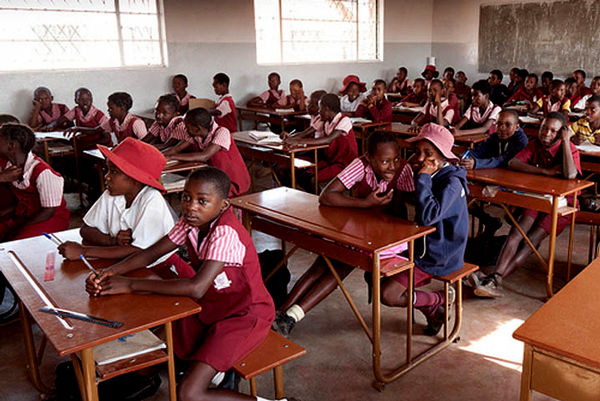
Nokuthaba Dlamini MATABELELAND North is well-known for the majestic Victoria Falls — one of the world’s Seven Wonders — but barely anything else.
The province, whose population was pegged at about 1,5 million at the 2012 national census, is also home to the Hwange coal mine and thermal power project that is being developed by the Chinese.
The mine has been in doldrums for years now while Zimbabwe is yet to enjoy significant benefits of the thermal power venture given the frequent power cuts the country suffers.
Most of the province is rural, remote and underdeveloped — almost forgotten. Its health centres are under-resourced, thinly-spaced and hardly big enough to cater for the population.
No wonder that, when Covid-19 hit Zimbabwe in early 2020 and the government subsequently introduced an ambitious vaccine roll-out, the province struggled to be adequately vaccinated.
Investigations carried out with support from Information for Development Trust, a local non-profit outfit supporting investigative reporting, revealed that the majority of the people in the province have struggled to be vaccinated.
In addition to direct observations and interviews, the investigations made use of data from the Health and Child Care ministry and other government departments to expose how skewed policies have left the largely rural population in the province badly exposed to the pandemic.
Part of the government’s plan was to inoculate all adult residents of Victoria Falls, a city of some 110 000 people, as a pivot for a broader strategy to help the country’s tourism industry re-open after a year of lockdowns due to the Covid-19 pandemic.
- Chamisa under fire over US$120K donation
- Mavhunga puts DeMbare into Chibuku quarterfinals
- Pension funds bet on Cabora Bassa oilfields
- Councils defy govt fire tender directive
Keep Reading
Small as it is, Victoria Falls is the most urbanised part of Matabeleland North and the government’s focus on the resort city as a launch pad for the push to reach 60% herd immunity against Covid-19 in Zimbabwe raised hope that the province would get a head start in the vaccination programme.
By January 25 2022, statistics show, 46,1% of the Matabeleland population had been fully vaccinated, coming second after metropolitan Bulawayo, which was at 51,2%.
More than half of Matabeleland North’s population had at least received the first dose of the Covid-19 vaccine.
This, ordinarily, would indicate that the province has relatively performed well, considering that, in comparison, Bulawayo is Zimbabwe’s second largest city and enjoys far more superior infrastructure and services than Matabeleland North.
This statistical comparison between Bulawayo and Matabeleland North is misleading, though.
Close analysis of the figures shows that the vaccine roll-out has been concentrated in Hwange district, which incorporates Victoria Falls where the government focused most as a way of resurging tourism following the devastating effects of Covid-19.
Statistics provided by the Health and Child Care ministry show that as of November 21, 2021, some 70,2% of the targeted population in Hwange district had received the first jab.
But, in sharp contrast, a mere 27,4% in rural Binga had received the second dose during this period.
Binga, the largest district in the province in terms of population and expanse, has 17 clinics and only one hospital.
This forces villagers to walk long distances to access vaccination, but then, the roads are mostly impassable by car.
According to the statistics, government was targeting 112,165 or 60% adults of 18 and above for vaccination.
Bubi district fared better than Binga, with 27,8% of the targeted population of 52,677 having received the second dose by November.
The other districts, namely Lupane (29,6%), Nkayi (35,2%), Tsholotsho (34,8%) and Umguza (33,1%) could have scored better than Binga and Bubi, but they were still well below the provincial average.
Government had targeted 69 998 adults for vaccination in Lupane, 72 868 in Nkayi, 74 449 in Umguza and 31 958 in Tsholotsho.
Efforts to get more current statistics were impossible as some district medical officers said collation of data was being hampered by power cuts that had gone on for weeks in some areas, together with lack of adequate staff.
The long distances have kept many away from the vaccination centres yet Covid-19 cases keep rising.
In November alone, Binga district recorded 2 400 infections.
The district medical officer, Simbarashe Manjengwa says the peak was recorded mostly in the Siabuwa area.
“The past festive season saw most of these cases being recorded in rural areas especially in Siabuwa,” Manjengwa said.
“Due to limited resources, it becomes a challenge for us to reach those areas, but we try to commit ourselves to get environmental health officers to reach out to them,” he added.
Admire Kuretu, the Matabeleland North provincial medical officer, admitted that statistics from Hwange district had given an exaggerated sense of accomplishment for the province as mostly the urban population was being covered.
He said districts other than Hwange were poorly covered because they lacked resources and health centres were far from the targeted people.
“We are not happy with the numbers covered so far in all our districts except for Hwange,” he said.
“Seventy percent of our covered population came from the Hwange district after the president and other government officials decided to lead the vaccination campaign from there,” added Kuretu.
Thabani Moyo, the Nkayi district medical officer, said the low Covid-19 vaccine uptake could be attributed to the fact that villagers have to walk long distances to access vaccination centres.
In areas under Chief Sikhobokhobo and Madlisa village, people travel as far as 30 kilometres to access a health centre or 100 kilometres to get treatment at the Nkayi Rural District Hospital.
“We can’t really put all the blame on the villagers for not coming to get vaccinated because our health centres are either far spaced or they are inaccessible due to the poor road network and, as such, we have failed to reach out to all the villages that require our services timely,” Moyo said.
Nkayi district only has eight health centres which comprise six clinics at Dakamela, Sikhobokhobo, Sesemba, Ziyangeni, Guwe and Zenka, one mission hospital at Mbuma) and the main Nkayi Rural District Hospital.
The hospital at Nkayi Centre serves 156 villages in the vast district’s 30 wards.
Sixty-eight year old Elizabeth Ngwenya from Mananomano village in Nkayi narrated how, together with her husband, she spent three weeks trying to get the Covid-19 vaccine.
They would wake up as early as 2am every day to queue up at Gonye Clinic after reports that Covid-19 was devastating the elderly.
But the clinic hardly has any nurses or personnel to attend to them, and the vaccines often ran out at this centre that has no electricity.
They finally walked the long trip to the district hospital, about 80 km away, where they got the first dose whose name they were not told.
And the distance has deterred them from going back for the second jab.
The district hospital itself has in the last six months been suffering from prolonged power outages that have operations in departments such as the mortuary, X-ray, maternity and admission wards operating in the dark.
Kuretu said vaccination must be decentralised to grassroots communities where the beneficiaries need educating, persuasion and reassurance in the wake of myths that discouraged the people, among them the vaccines lead to infertility.
Less people were going back for the second dose, he added.
Allya Siatimbula, a Binga based women’s rights activist, said the slow progression of the Covid-19 vaccination programme was a reflection of the poor state of the health system in the remote district.
“Our healthcare standards, especially in Binga, are poor,”Siatumbula said.“For us to arrest Covid-19 and regain trust in vaccines, our health care systems should be revamped through adequate financing from government.”
Itai Rusike, executive director of the Community Working Group on Health, said surveys his organisation conducted in both urban and rural areas showed that Covid-19 vaccination hesitancy was caused by diminished trust in the authorities.
“There have been concerns on vaccine safety and efficacy which calls for consistent engagement through trusted actors, particularly given the changing nature of the pandemic and responses,” Rusike said.
Sothile Tshabalala of Khumalo village in Nkayi said she had to get a jab to protect the ownership of her homestead.
“Being a single mother with small children and without a home meant that if I’d refused to get vaccinated we were going to be homeless,” Tshabalala said.
“In one of the meetings around June last year, our kraal head told us that if we did not vaccinate he was going to remove our names from his books and even visiting other neighbours or seeking help was now difficult as they demanded vaccination cards before entering their homesteads.”
As of January 25, only 33,9% of Zimbabwe’s targeted population had received the second dose of the Covid-19 vaccine while 44% had received the first dose.
The government missed the December 2021 deadline to vaccinate at least 60% of the population to reach herd immunity.
- This data investigation was done in partnership with the Fojo Media Institute and International Media support (IMS)











